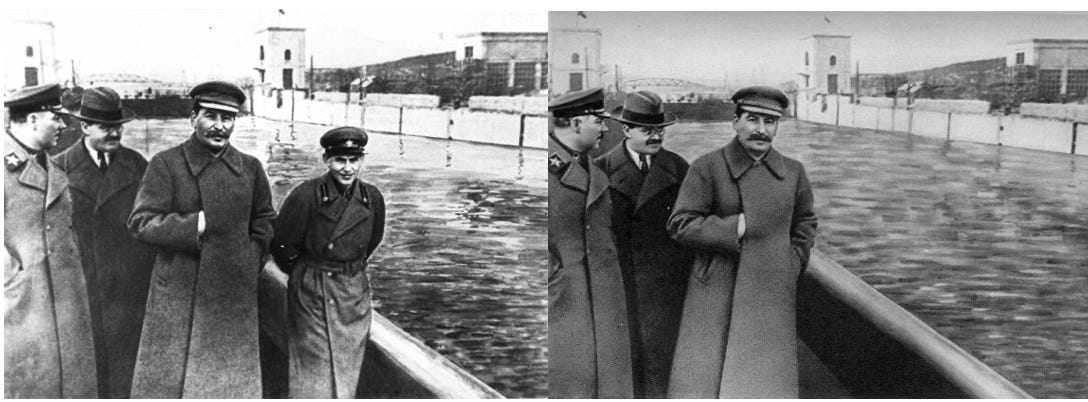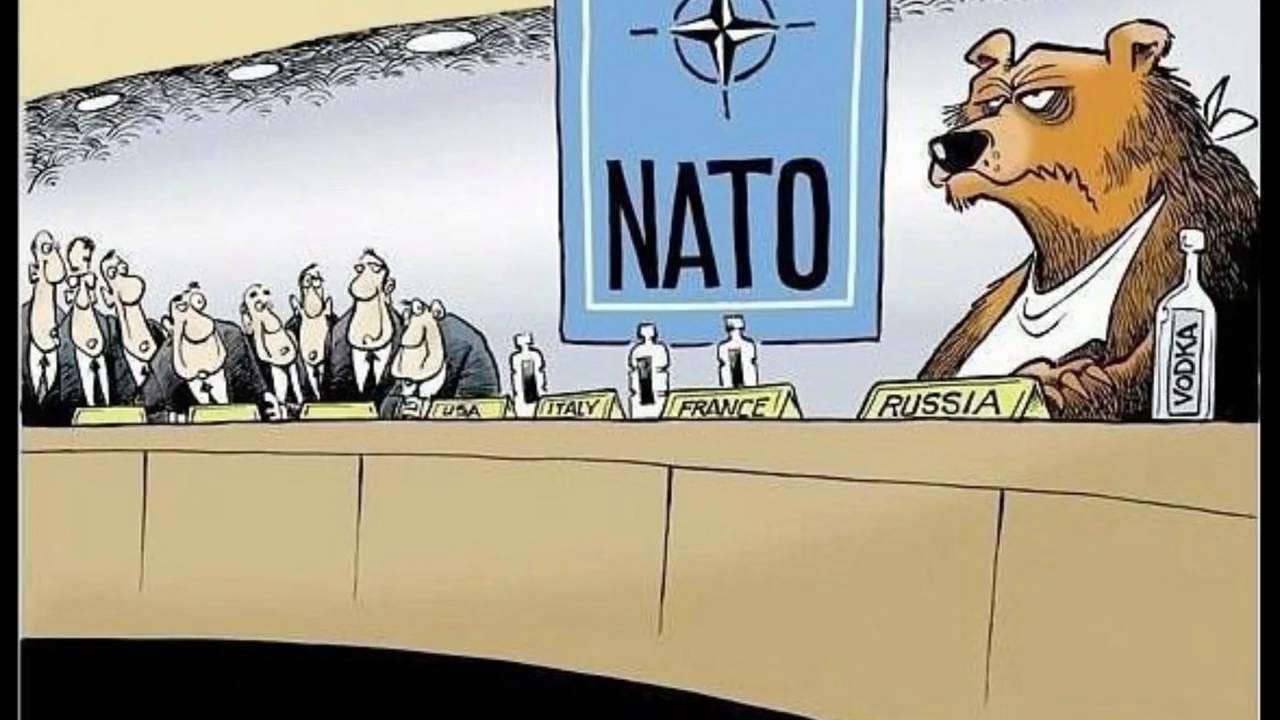Ready to talk? Uneasy task. Reviving the old practice. Gazprom not taking risks
February 2, 2022
Ready to talk?
After meeting with Hungarian Prime Minister Viktor Orbán, Vladimir Putin said that he was carefully analyzing the U.S. and NATO responses to Russian proposals on security guarantees and saw that his principal concerns were ignored.
“We have not seen adequate consideration of our three key demands concerning the prevention of NATO expansion, the refusal to deploy shock weapons systems near Russia’s borders, and the return of the bloc’s military infrastructure in Europe to the state of 1997, when the Russia-NATO Founding Act was signed.”
In addition, the Russian President voiced another of his fears, which prevents him from agreeing to Ukraine’s accession to NATO. After that, he said, Ukraine will try to regain the Crimean Peninsula militarily.
“It is written in the doctrinal documents of Ukraine itself that they are going to take back Crimea, including by military means.
“Let’s imagine that Ukraine is a member of NATO, is stuffed with weapons, has modern strike systems like those in Poland and Romania, and begins an operation in Crimea. Imagine that Ukraine is a NATO member and begins these military operations. Do we have to go to war with the NATO?”
Following Vladimir Putin’s statements, Russian Foreign Minister Sergey Lavrov continued to use methods of “people’s diplomacy” and published his message to his colleagues from the United States and other NATO members.
Declaring that the U.S.’ and NATO’s “responses to our proposals show that they differ considerably in their understanding of the principle of equal and indivisible security, which is fundamental to the entire European security architecture,” the Minister made no threats of military or military-technical measures and hinted at his willingness to discuss the differences. “We consider it necessary to immediately clarify this determining issue from the point of view of the prospects of dialogue.”
In my view, the Russian Minister’s proposal to his counterpart to start negotiations not with the NATO bloc, but with each member country of the alliance separately, looks a bit strange.
“Your answer will help us better understand the degree of treatability of our partners, as well as the possibility of joint progress in reducing tensions and strengthening pan-European security.
“We also assume that the response to this message will come in a national capacity, since the commitments mentioned were made by each of our states individually and not on behalf of, or as part of, any bloc.”
On the one hand, Russia’s desire to split NATO unity is easy enough to read. But on the other hand, having received 28 responses written with different positions and arguments, the Russian Foreign Ministry is sure to get bogged down trying to bring them together in a single document. This directly contradicts the Kremlin’s desire for quick results.
Uneasy task
Most of the countries participating in the OPEC+ agreement are unable to increase oil production to the agreed levels. For example, in December, despite a formal increase of the total OPEC+ quota by 400,000 barrels/day (bpd), the actual production increased by only 260,000 bpd. Out of 23 members, only Saudi Arabia, UAE, and Iraq used their quotas in full.
In spring 2020, Russian oil companies reduced investments in drilling due to falling demand and had to stop operating wells. Today, they have practically no spare capacity to increase production. To ramp up oil production, they must intensify drilling, which demands a lot of time.
Experts believe that by the end of the year, Russia will not be able to fully use its quota within OPEC+ and will produce 10.2 million bpd—that is below the 2019 level, which was 10.5 million bpd.
Bureaucracy crumbles bureaucratic barriers
A sharp increase in budget spending on investment projects in Russia in the second half of last year led to a surge in the price of construction materials. Their growth for the year amounted to 23.4%. This came as a surprise to officials who seem to be unfamiliar with the influence of supply and demand on prices and are now looking for administrative ways to combat inflation.
One of the proposals approved by Deputy Prime Minister Marat Khusnullin was the refusal to inspect every batch of imported cement, introduced in Russia several years ago. The initiators of the control were Russian cement producers, who accused foreign suppliers of dumping prices (although they could not show any evidence of this).
During the discussion, the government faced the traditional problem of the planned economy, that of write-ups. Russian cement producers informed the Federal State Statistics Service of the availability of large spare capacity, based on which the government restricted the import of cement. However, after conducting a comprehensive inspection, the Ministry of Industry discovered that the companies had included mothballed capacities in their reports. It may take seven to 18 months to restore production there.
The share of imported cement in Russia is a little over 3%, and the government hopes that the temporary relaxation of restrictions will allow imports to double, increasing supply and thereby curbing price growth. However, I have doubts about the effectiveness of the decision taken: The existing practice of inspecting imported cement does not apply to EurAsEC member countries (Belarus and Kazakhstan), which provide more than 80% of imports. For cement imports to double, all other cement suppliers to Russia would need to increase their sales fivefold. That would probably be possible, but the loosening of restrictions would be temporary, until Russian companies reactivate their capacities and increase production volumes. I have no doubt that foreign companies will think seven times before taking the bait. The regulation of the Russian market is too volatile.
Reviving the old practice
Several Russian media outlets received notices from internet censor Roskomnadzor (RKN), demanding that they remove within 24 hours the materials of anti-corruption investigations conducted by Alexei Navalny’s Anti-Corruption Foundation (FBK). In 2017-2021, the targets of such investigations were Vladimir Putin, Mikhail Mishustin, Dmitry Medvedev, Sergey Chemezov, Dmitry Rogozin, and other high-ranking Russian officials. TV company Dozhd, radio Echo Moskvy, and online publications Meduza, Znak, and Svobodnye Novosti confirmed the receipt of requests.
RKN refers to the request of the Prosecutor General’s Office, according to which the media disseminated materials of the FBK, whose activities are banned in Russia under the law on countering extremist activity.
The Kremlin has been in serious trouble with the FBK investigations: A story about Vladimir Putin’s palace at Gelendzhik has been viewed more than 120 million times on the FBC YouTube channel, and a story about Dmitry Medvedev has had over 44 million viewers. None of the officials who were the subject of the investigations tried to challenge the information or clear their reputations in court.
The ban on FBK activities in Russia allows the Kremlin to make investigative material inaccessible to Russians. TV company Dozhd has already decided to remove the publications from its website. Most likely, other media outlets will do the same: Refusal to comply with this order could lead to the closure of the media outlets. After that, similar demands can be made to Google, the owner of YouTube, which will face a difficult choice: To comply with the censor’s order and save its business in Russia, or to stand up for freedom of speech and lose business.

Attempts to rewrite history are not new to Russia. During the Stalinist repressions, censoring photographs was a way of life: Trotsky, Kamenev, Bukharin, and dozens of other repressed leaders of the country disappeared from them. The owners of the Bolshoi Soviet Encyclopedia regularly received letters in which they found reprinted pages with updated texts on events and people. The torn-out pages had to be sent to the censor.
As the decades passed, it became clear that the fight against history had no chance of winning. But as we know, the experience of history teaches us only that it teaches us nothing. So once again, the Kremlin is trying to change the past.
President to decide
The struggle of Russian agencies around the future of cryptocurrencies in Russia has reached a new level. Deputy Prime Minister Dmitry Grigorenko held a meeting on this issue, during which the Ministry of Finance and the Bank of Russia entered a fierce dispute. Neither side wanted to change its position: The Bank of Russia insisted on banning all operations with cryptocurrencies, while the Ministry of Finance suggested limiting itself to strict regulation. Other participants in the meeting—Minister of Economy Reshetnikov, Minister of Digital Technology Shadaev, Presidential aide Oreshkin, representatives of Rosfinmonitoring, the General Prosecutor’s Office, FSB—took the observers’ position.
Deputy Finance Minister Alexei Moiseyev said a decision could be taken very quickly: “Everything is happening actively in the government, and I think that some decision will be made quickly. My expectation is that within a month.”
It seems to me, however, that no decision will be made on this issue without Vladimir Putin’s involvement.
Gazprom not taking risks
The operator of Ukraine’s gas pipelines has reported that as February began, Gazprom has almost doubled the volume of gas sent to Europe via Ukraine. During January, the average daily volume of transit was 54 million cubic meters, which is almost five times less than in 2017-2019. On February 1 and 2, Gazprom’s transit request was 107 million and 102 million cubic meters. This news led to a sharp drop in gas prices in Europe, which fell below $900/1000 cubic meters.
Just two days ago Interfax released an anonymous commentary explaining that Gazprom had no spare production capacity and that this was the reason for the drop in its exports to Europe. It seems that the Russian monopoly’s hope to maintain the instability of the European gas market has failed—LNG supplies have surged and have begun to displace Russian gas. Losing the market was clearly not part of Gazprom’s plans.
Is Sberbank on the alert?
The Kommersant newspaper reported that Sberbank, Russia’s largest bank, conducted technological drills to check the stability of its information systems in case the United States imposes sanctions on the supply of new electronics to Russia and on the support of existing ones. According to the newspaper, the exercise simulated a situation where Sberbank would be cut off from support from foreign software and electronics suppliers, including Microsoft, Nvidia, VMware, SAP, Oracle, and Intel. Sberbank has neither confirmed nor denied this information.
According to experts with whom I was able to talk, the information system of Sberbank (as well as all other major Russian banks) relies entirely on imported solutions and will not be able to maintain operability in case of sanctions.
The first step
Vladimir Putin wants to achieve international recognition of the Russian vaccine Sputnik, and one of the arguments in favor of this should be the fact that the vaccine is successfully used in Russia. Sputnik accounts for about 90% of the Russian market; foreign vaccines have not yet been officially approved for use in the country.
A year ago, AstraZeneca tried to punch a hole in the wall that closed the entrance for its vaccine to the Russian market and began cooperating with the Russian Direct Investment Fund (RDIF), investor and promoter of Sputnik. A year has passed, and AstraZeneca may have opened the door—together with RDIF, it acquired a minority stake in Target Medicals Group, a Russian company engaged in the development of a drug for the treatment of resistant arterial hypertension. The investment is the first Russian project in which a global pharmaceutical company is involved.
Target Medicals was established in 2012 and operates in the Skolkovo technological park. The main shareholders of the company are citizens of Belarus Alexei Kliuchenovich and Natallia Strushkevich, who own 65.2% of shares.




